2023 JUNIOR CYCLE SHOOTOUT: YAMAHA YZ65 VERSUS HUSQVARNA TC65
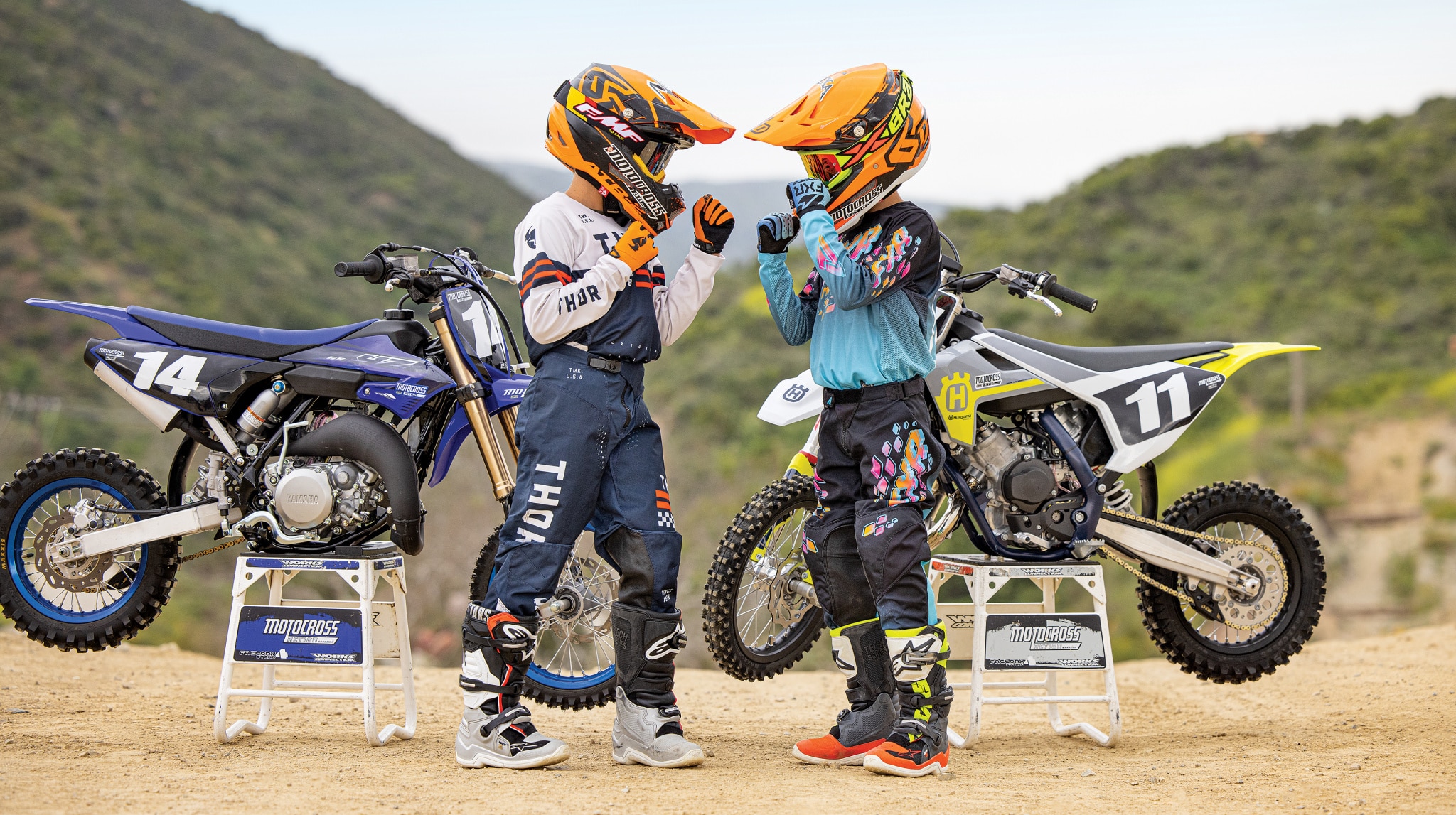 The Husqvarna TC65 retails for $5599, which is $800 more than the YZ65.
The Husqvarna TC65 retails for $5599, which is $800 more than the YZ65.
Q: HOW DOES THE MXA WRECKING CREW TEST 65cc JUNIOR CYCLES?
A: The MXA wrecking crew consists of a wide variety of test riders, but we don’t have any full-time mini-bike riders. Don’t get us wrong; we’ve had lots of great mini-cycle test riders over the years, but they have the bad habit of growing too much to fit on a 65cc or 85cc bike. We do have one adult test rider who is small enough and light enough to fit on Superminis, but he’s far too big for 65s.
For this test, we called up two test riders who have helped us out with our 50cc and electric Pee-Wee tests in the past. Luckily, they are both racing in the 65 class now on KTMs. Of course, it would have been better to find one test rider who raced a Yamaha and one who raced a KTM/Husky/GasGas to make this shootout as unbiased possible, but 7-to-11-year-old test riders who are knowledgeable, articulate and discerning don’t grow on trees, which is why we fell back on our 50cc test riders. They understand the system.
Q: WHO EXACTLY ARE JUNIOR CYCLES MADE FOR?
A: Looking at the brand-new 2023 Yamaha YZ65 and Husqvarna TC65 two-strokes, our big-bike test riders couldn’t help but wish they had bikes as good as these when they were kids. Modern-day mini-cycles look like replicas of their 450cc brothers, and they are race-ready machines that spark excitement in any kid who loves to go fast.

Built to race, the YZ65 and TC65 aren’t made for first-time riders. These bikes are designed for kids as a stepping stone from 50cc Pee-Wees to 85cc mini-cycles. Of course, you could teach a kid how to start riding on a 65, but they’re going to have a hard time learning how to balance and modulate the power while mastering the clutch and shifting.
The optimal trajectory for young kids is to start on a Strider stability bike before advancing to a battery-powered and throttle-equipped Stacyc stability bike, and then to a normal bicycle before getting on a 50cc two-stroke or electric Pee-Wee. From there, the step up to a 65 junior cycle is the final leap in the learning curve.
Thanks to Stacyc, the youth of today have a huge leg up on every generation before them when it comes to learning about balance and throttle control at a very young age. Plus, their parents aren’t required to change oil, pre-mix gasoline, swap out clutch plates, clean air filters or worry about disturbing the neighbors with the noise. Stacyc stability bikes allow kids to ride nonstop, as long as the parents have a backyard and plenty of batteries and chargers. As a whole, the motocross industry is benefiting from these electric stability bikes, and the mini-cycle classes are growing because of them.
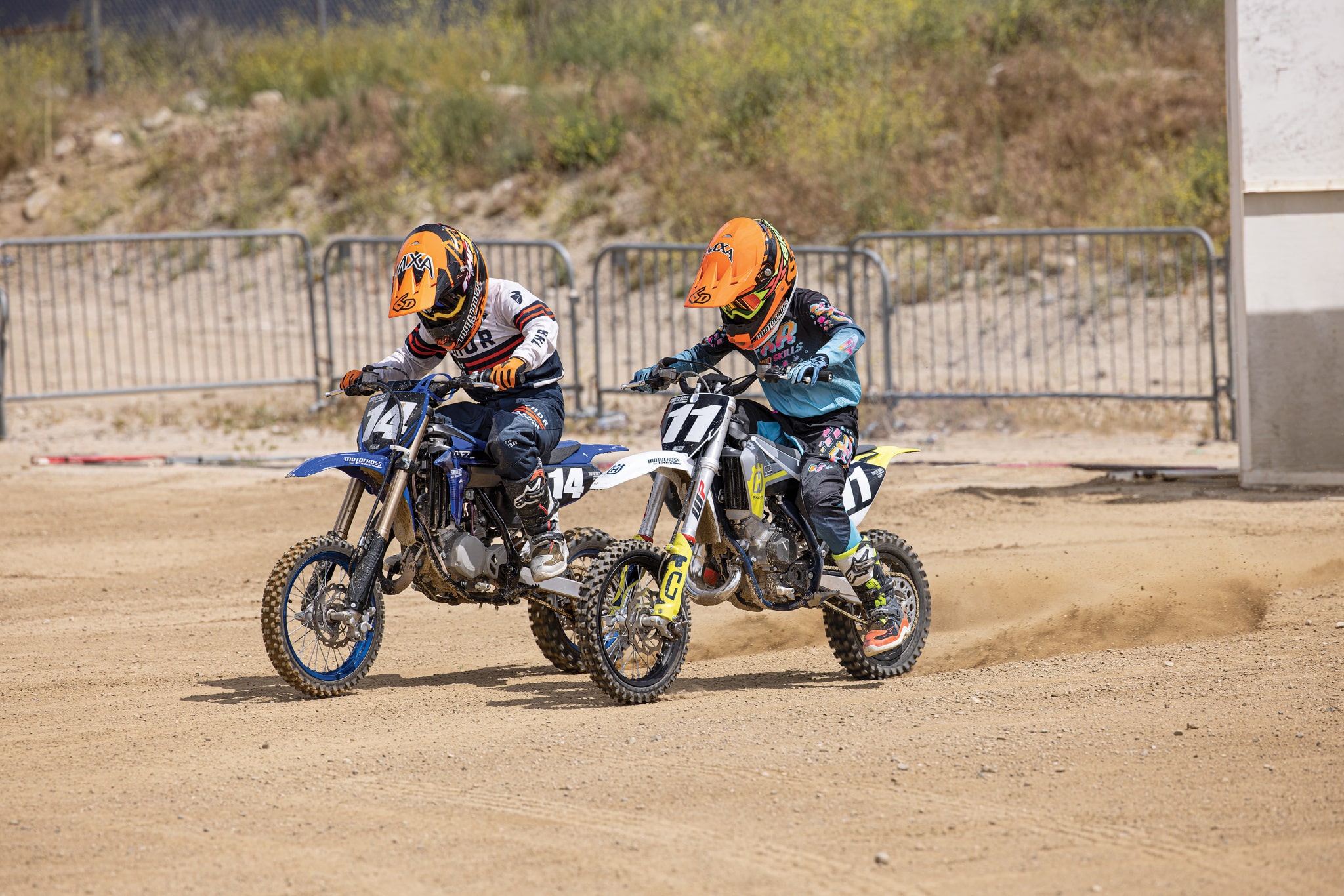 The first KTM 65SX came out in 1998, 20 years before the YZ65 was re-introduced. The Husky TC65 is a white version of the KTM.
The first KTM 65SX came out in 1998, 20 years before the YZ65 was re-introduced. The Husky TC65 is a white version of the KTM.
Q: HOW LONG HAVE 65 JUNIOR CYCLES BEEN AROUND?
A: Decades ago, when motocross was a booming sport selling 1,000,000 bikes a year, the “Big Four” dabbled in 65cc bikes, known as “junior cycles.” The Suzuki RM60 was introduced in 1979 and was upped to 65cc in 2003 (although the 2003 RM60 was really a yellow KX60 built during their brief alliance). The Honda CR60 was only produced in 1983 and 1984. Kawasaki entered the 60cc class in 1983, eventually upping it to 65cc in 2006 (it is still in production today).
As for the two junior cycles that we are testing, Yamaha built its first YZ60 in 1981, but only kept it in production for two years. The current YZ65 model was reintroduced in 2018. On the other hand, the 2023 Husqvarna TC65 is based on the KTM 65SX that was introduced in 1998 and has been undergoing constant updates since then. It should be noted that the KTM 65SX is the basis of the Husqvarna TC65 (introduced in 2017) and GasGas MC65 (introduced in 2021). At most high-profile amateur events across the country, the Austrian trio of 65s (KTM/Husky/GasGas) outnumber Yamaha YZ65s by a 10-to-1 ratio.
The YZ65 is the newest junior cycle from a Japanese manufacturer. Originally, the YZ65 retail price was close to that of the KTM/Husky/GasGas 65s, but over the last five years, the Austrian 65s have gone up in price and the YZ65 has come down.
The 2023 YZ65 has a manufacturer’s suggested retail price of $4799, while the 2023 Husqvarna TC65 is $5599, the KTM 65SX is $5499, and the GasGas MC65 is $5299. Unlike the bigger Austrian bikes, which have different suspension settings and different airboxes (and the Huskys have a lower suspension), the only real difference between the three Austrian 65s is the white, orange and red bodywork.
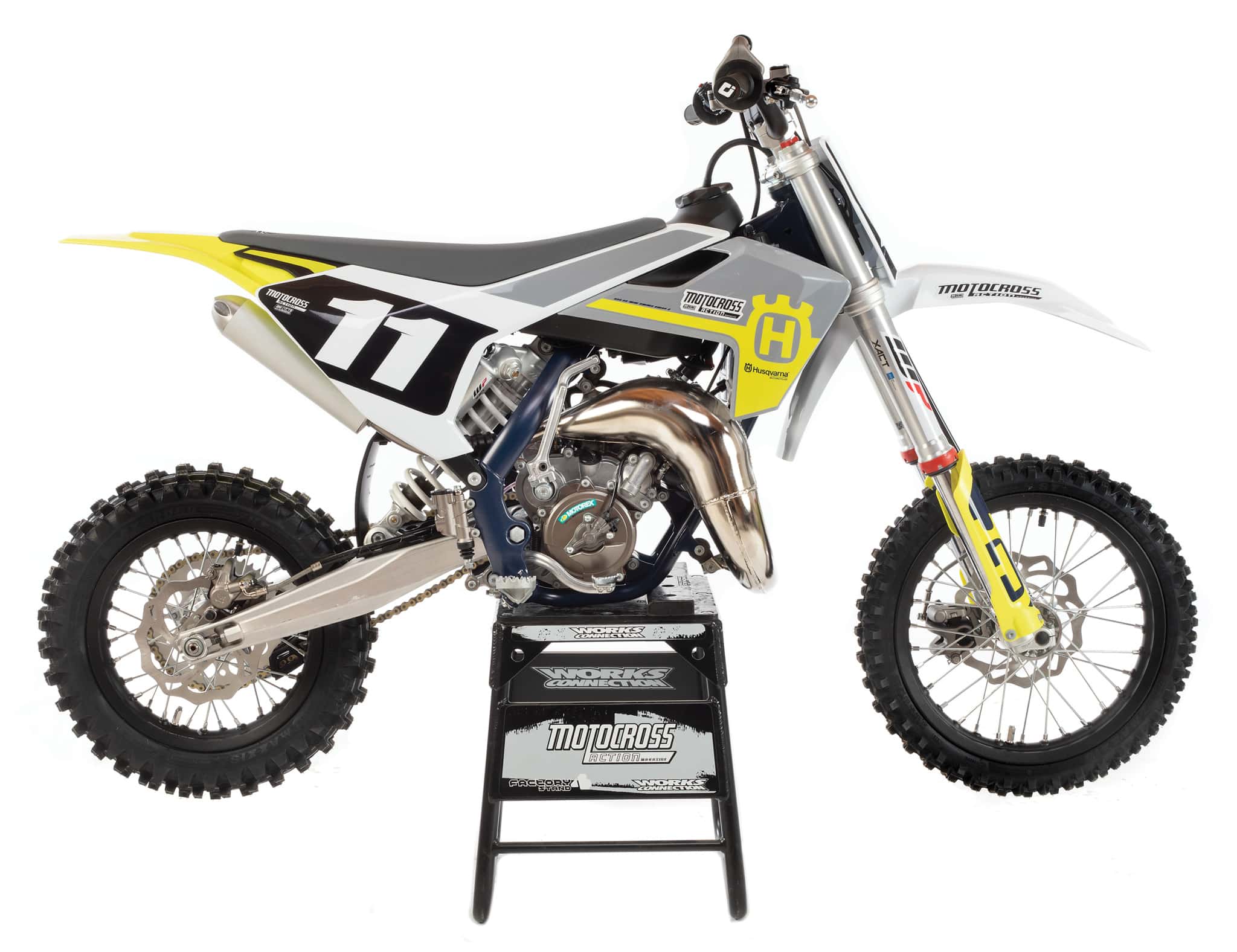 The Husky TC65 comes with 35mm WP XACT air forks.
The Husky TC65 comes with 35mm WP XACT air forks.
Q: WHICH PARTS ARE SIMILAR ON THE YZ65 AND TC65?
A: Here’s a list of YZ65 and TC65 parts that are the same.
(1) Transmission. Both bikes have a 6-speed gearbox.
(2) No link. Neither bike comes with a shock linkage. The rear shock on both models connects directly to the swingarm. For Yamaha, this is the only motocross bike they sell without a linkage, as the YZ85 has linkage.
(3) Fuel capacity. Both bikes carry just under 1 gallon (0.9 gallons) of fuel.
(4) Wheels. They have the same wheel sizes, with a 14-inch wheel in the front and a 12-inch in the rear. Beware, because they are smaller, mini-bike tires are harder to change than big bike tires.
(5) Frame. Both brands use steel frames.
Q: WHAT MAKES THE YZ65 AND TC65 DIFFERENT?
A: These bikes have a few things in common, but mostly they are very different machines. Here’s a list of the major differences.
(1) Engine layout. The Yamaha has a conventional-style engine, with the gearbox directly behind the crankshaft. The Husqvarna is stacked vertically, with the crank directly above the main shaft and countershaft. This makes for a taller engine, but it’s shorter front to rear.
(2) Power valve. Both engines have power valves, but the Husqvarna uses exhaust pressure to open it, while the Yamaha is driven by centrifugal force and a mechanical ball-ramp mechanism.
(3) Clutch. You guessed it. The Yamaha is cable-operated, and the Husqvarna has hydraulic actuation by Formula, which keeps the price down compared to Brembo components.
(4) Brakes. Nissin makes the YZ brakes, while Formula supplies the Husqvarna brakes. The front brake rotors are the same size on both (198mm), but the YZ has a 190mm rear brake rotor, while the Husqvarna rear rotor is 180mm.
(5) Adjustability. You can move the handlebars to four different positions on the Yamaha with two bar-mount holes in the top clamp and by rotating the eccentric handlebar clamps to fine-tune the rider cockpit. The Husqvarna has only one mount hole, meaning there is less adjustability.
(6) Radiator. The Yamaha has only one radiator, whereas the Husqvarna has two.
(7) Suspension. Yamaha uses 36mm Kayaba suspension with spring forks, while Husqvarna uses 35mm WP XACT air forks.
(8) Tires. Both brands use Maxxis tires, but the Maxxcross SI (soft intermediate terrain) tire is stock on the YZ, and the ST (soft terrain) is stock on the Husky.
(9) Gearing. The TC65 has a 48-tooth rear sprocket and the YZ has a 47.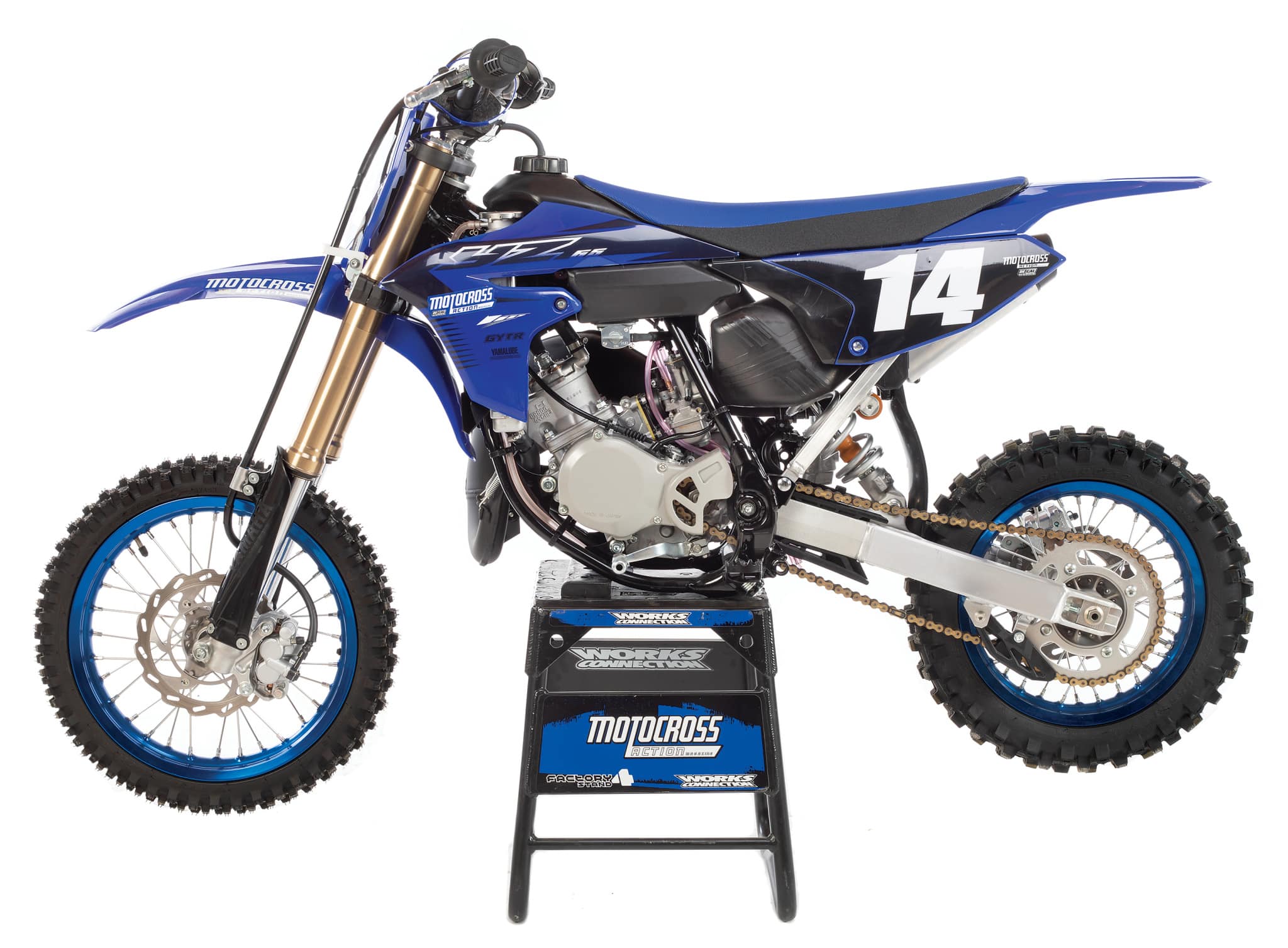
The Yamaha YZ65 engine is snappy and strong off the bottom end.
Q: HOW IS THE JETTING ON THE HUSQVARNA TC65?
A: The TC65 jetting is just okay in stock form, but it can be a lot better with a needle change. R&D Racing’s Dean Dickinson is a two-stroke connoisseur with a deep well of carburetor knowledge. Dean made his own needle for the KTM/Husky/GasGas 65SX to clean up the bottom end while also giving the rider more adjustability. The stock needle is fine when little Johnny is in the midrange and above on the TC65, but from zero to about 1/8th throttle, it is sloppy rich. On the bottom end, it will load up, and you constantly have to clean it out or you’ll foul the plug.
With the stock needle, you have to turn the air screw out three turns to clean it up, but then you lose tuneability.
With an R&D Racing needle, you can run the air screw one turn and then fine-tune it from there. Additionally, with the R&D Racing needle, the stock jets work great. Unfortunately, it does cost $75.00 to get the needle, which seems way too pricey for such a small part, but it’s worth it. The 2023 TC65 will be smoother and safer on the track, and you’ll save money on spark plugs. We recommend using the R&D needle on the second or third clip. Plus, KTM/Husky/GasGas recommend a 60:1 pre-mix ratio because the stock bikes are so rich. Once you swap the needle from R1Dean.com, you can go back to a more traditional 40:1 ratio.
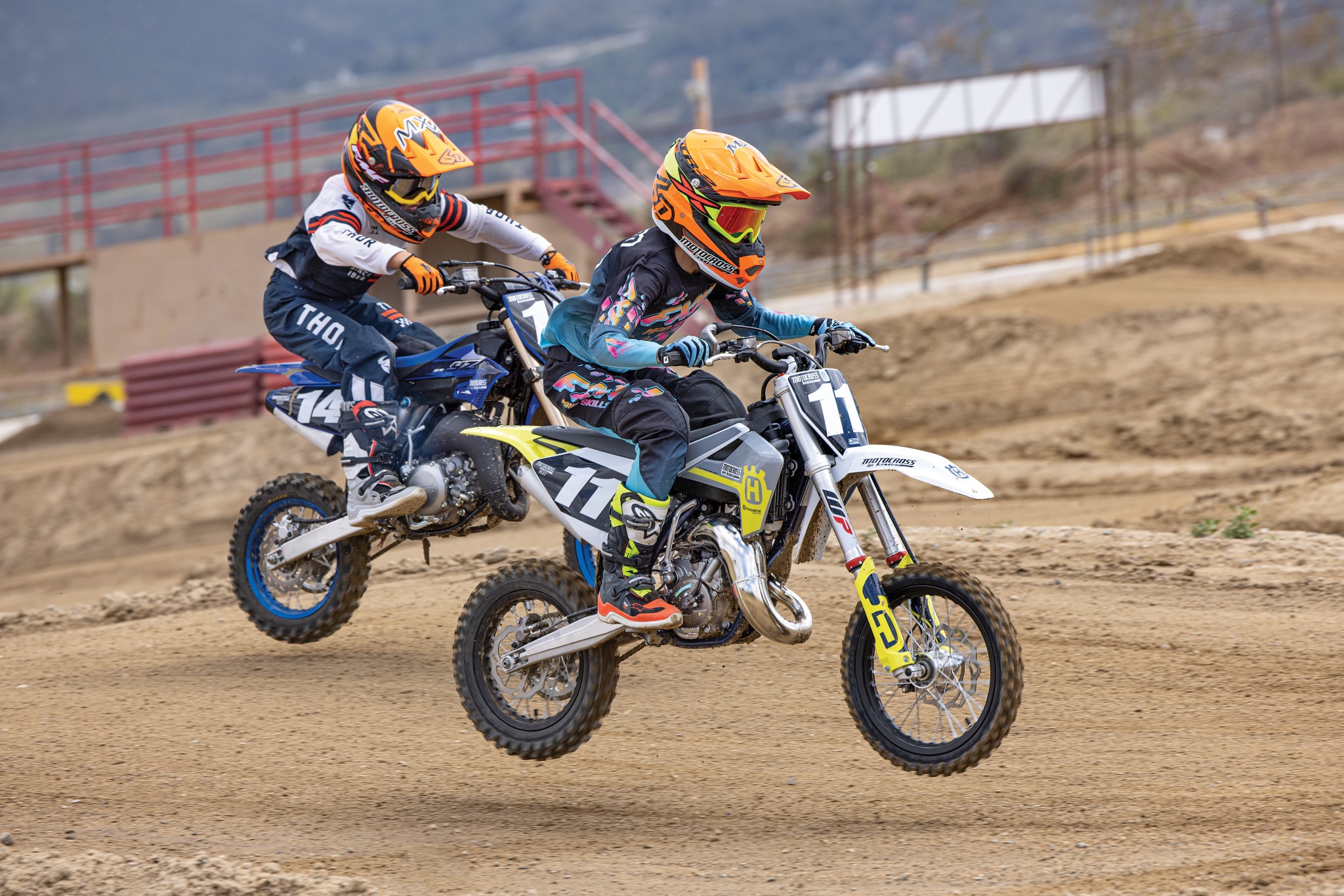 Both the YZ65 and TC65 have 6-speed transmissions.
Both the YZ65 and TC65 have 6-speed transmissions.
Q: HOW IS THE POWER ON THE HUSQVARNA TC65?
A: The Husqvarna, KTM and GasGas engines are impressive for such little machines. After you swap out the stock needle for the R&D needle, the TC65 runs smooth and crisp off the bottom end. The TC65 power rolls on smoother than the YZ65’s and is actually a lot less exciting down low. You don’t feel the strength of the engine until you’re higher in the rpm range. To give the TC65 a little more excitement down low and to eliminate the hesitation that sometimes occurs when landing off jumps, R&D Racing make a dual-stage power valve spring. As with the 2022 and prior model year, the TC65 uses exhaust pressure to open the power valve; however, the small-bore, 65cc engine only produces a maximum of 2 psi out of the stock exhaust pipe. This means that at low rpm, the TC65 doesn’t have enough pressure to open the power valve properly. Since the power valve covers three-quarters of the exhaust port when it’s closed (to help improve torque off idle), throttle response is ruined if it doesn’t open fast enough. R&D’s two-stage PowerValve spring starts off super light, allowing it to get three-quarters of the way open. Then, once the rider gets the 65cc higher in the rpm range, it opens all the way. With this spring, our test riders felt the engine ran cleaner and got into the power with less hesitation.
Q: HOW IS THE POWER ON THE YAMAHA YZ65?
A: The Yamaha YZ65 silencer makes some great two-stroke music as the engine revs up quickly. Compared to the Husky, the YZ65 is snappy on the low end. Our supervising MXA test riders, as well as the kids’ dads, noticed that the YZ65 was jumpier on the low end and required much more shifting. When the Husky TC65 was rolling into the power, the YZ65 was revving out fast. Our test riders were shifting much more often on the Yamaha than on the Husqvarna. The test riders noted that the Yamaha YZ65 had a longer throttle pull, but that didn’t equate to more horsepower. The YZ65 was more exciting on the bottom end, but the Husqvarna out-pulled it on top.
Q: HOW DO THE YZ65 AND TC65 JUNIOR CYCLES RUN ON THE DYNO?
A: After seeing the 65s in action, we were surprised to find out the YZ65 is a full horsepower faster than the Husqvarna. Off the crack of the throttle, the dyno chart shows the YZ65 powerband picking up quicker, while the TC65 has a slight lag. The curves remain close in the low end, and then the Husqvarna pulls away in the mid-range by half a horsepower, and then it peters out, while the YZ65 keeps pulling. The Husqvarna peaks at 15.77 horsepower at 11,200 rpm, while the Yamaha YZ65 peaks at 16.90 horsepower at 11,290 rpm. The Yamaha also takes the cake in the torque category, notching 8.27 pound-feet of torque at 10,290 rpm, while the Husky has 7.85 at 9500 rpm. The Yamaha’s dyno results surprised us, but in action, the Yamaha was harder to ride for our testers.
Q: HOW DID THE YZ65 AND TC65 HANDLE ON THE TRACK?
A: Even though the Yamaha is significantly heavier than the Husqvarna, our test riders couldn’t feel the weight difference, largely because the YZ65 was so much snappier at the crack of the throttle. However, they could tell that the Yamaha YZ65 was much wider than the TC65. Although they have almost identical seat heights, bigger riders had an easier time holding onto the YZ65 because the seat is wider, and the shrouds and side panels are wider as well.
The TC65 is skinnier, lighter, and nimbler. As for suspension, our testers felt that the Kayaba suspension on the Yamaha YZ65 was stiffer and held up higher in the stroke, while the stock settings on the Husqvarna TC65 were softer. Of course, with the WP XACT air forks, the Husqvarna is easy to dial in for the rider’s weight and skill level, but our testers preferred the stock and recommended 43-psi (3-bar) air pressure.
Q: WHAT DID WE REALLY THINK?
A: Overall, we were surprised with how well the YZ65 kept up with the Husqvarna. Because we see so many Austrian 65s and so few Yamaha 65s, we expected there to be a bigger performance gap between the two bikes. Ultimately, we concluded that the KTM/Husqvarna/GasGas 65 two-strokes are better race bikes because they are proven on the track. Based on what parents have learned and handed down, there is a wealth of technical knowledge available regarding the KTM 65SX, which is identical to the Husky TC65 and GasGas MC65. There are also a vast number of aftermarket parts available for it.
The Austrian 65s do have a few quirks and reliability issues that the Yamaha doesn’t suffer from, but there are a plethora of tips, tricks and techniques available to dial in the 2023 Husky TC65, which makes the Austrian 65s more viable race machines.
The Yamaha YZ65 does have its pluses. It is a more affordable, more reliable “and a better” buy for parents who don’t have any mechanical skills. It is also a great bike for young riders who aren’t aspiring to win amateur nationals but still want to have a great time on the track or trail. In stock form, the YZ65 jetting is clean, and the power comes on stronger. The YZ65 is the perfect bike for riders who want to stand out from the crowd, which unfortunately is not what most 9-year-olds want.


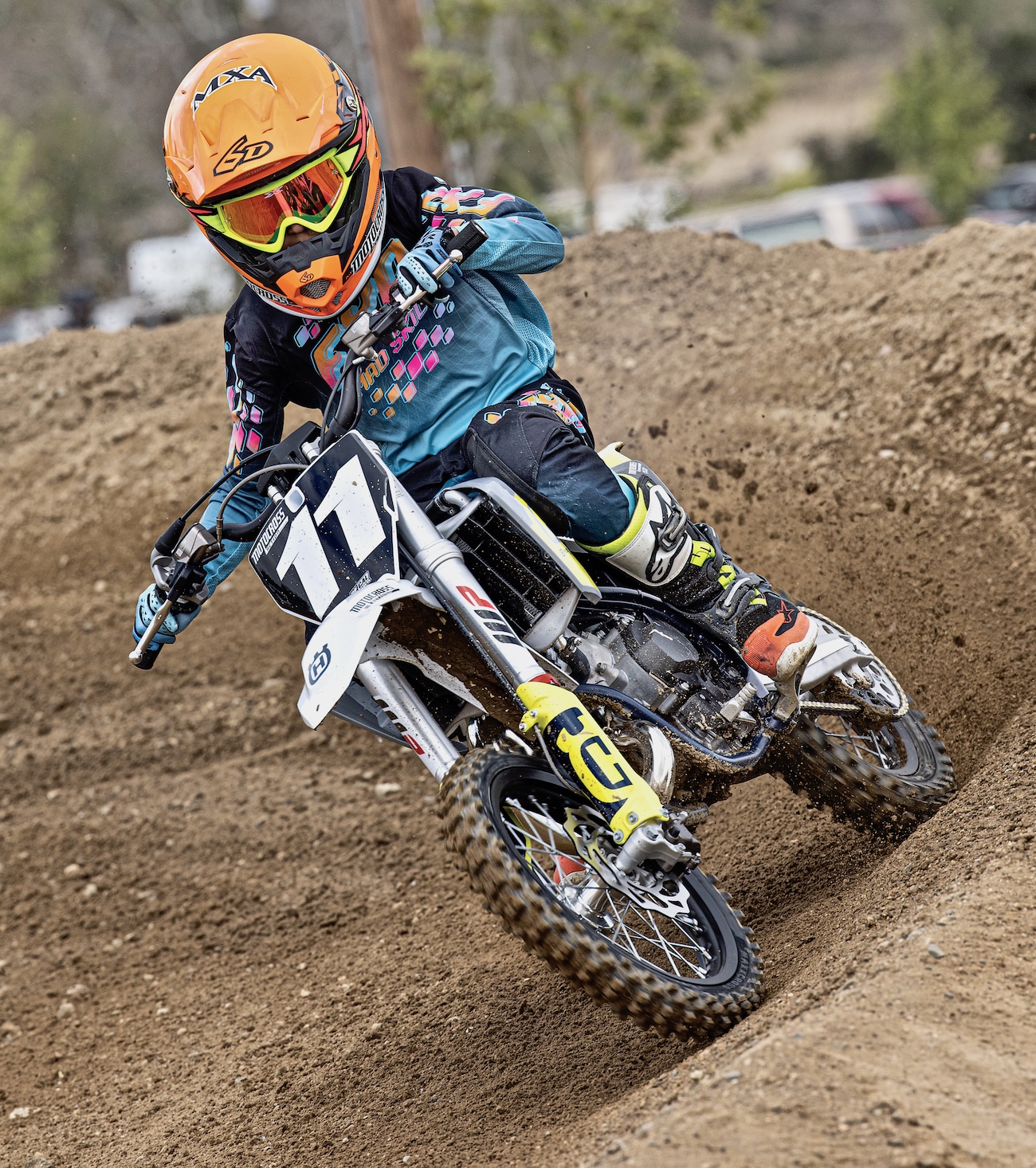
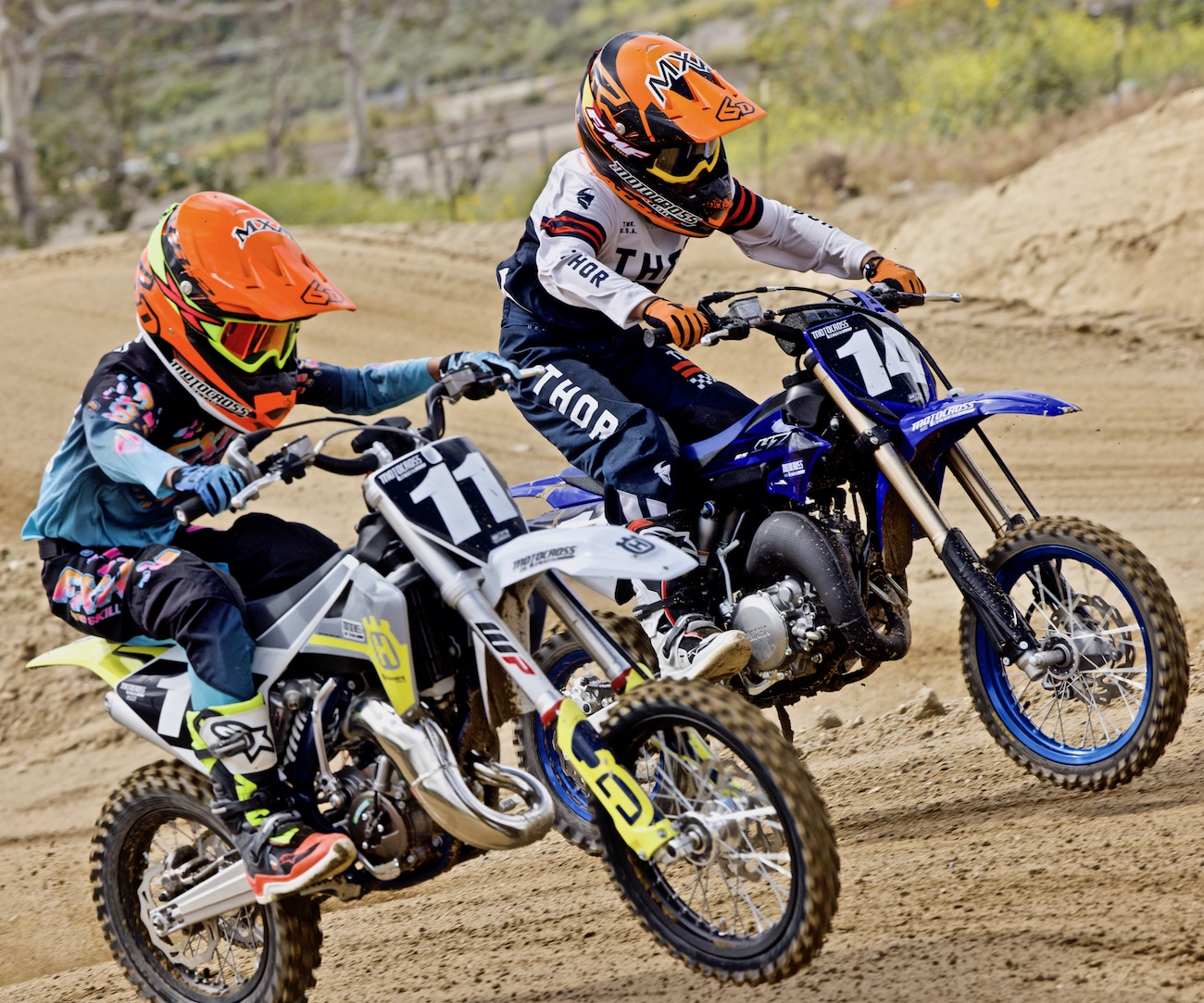

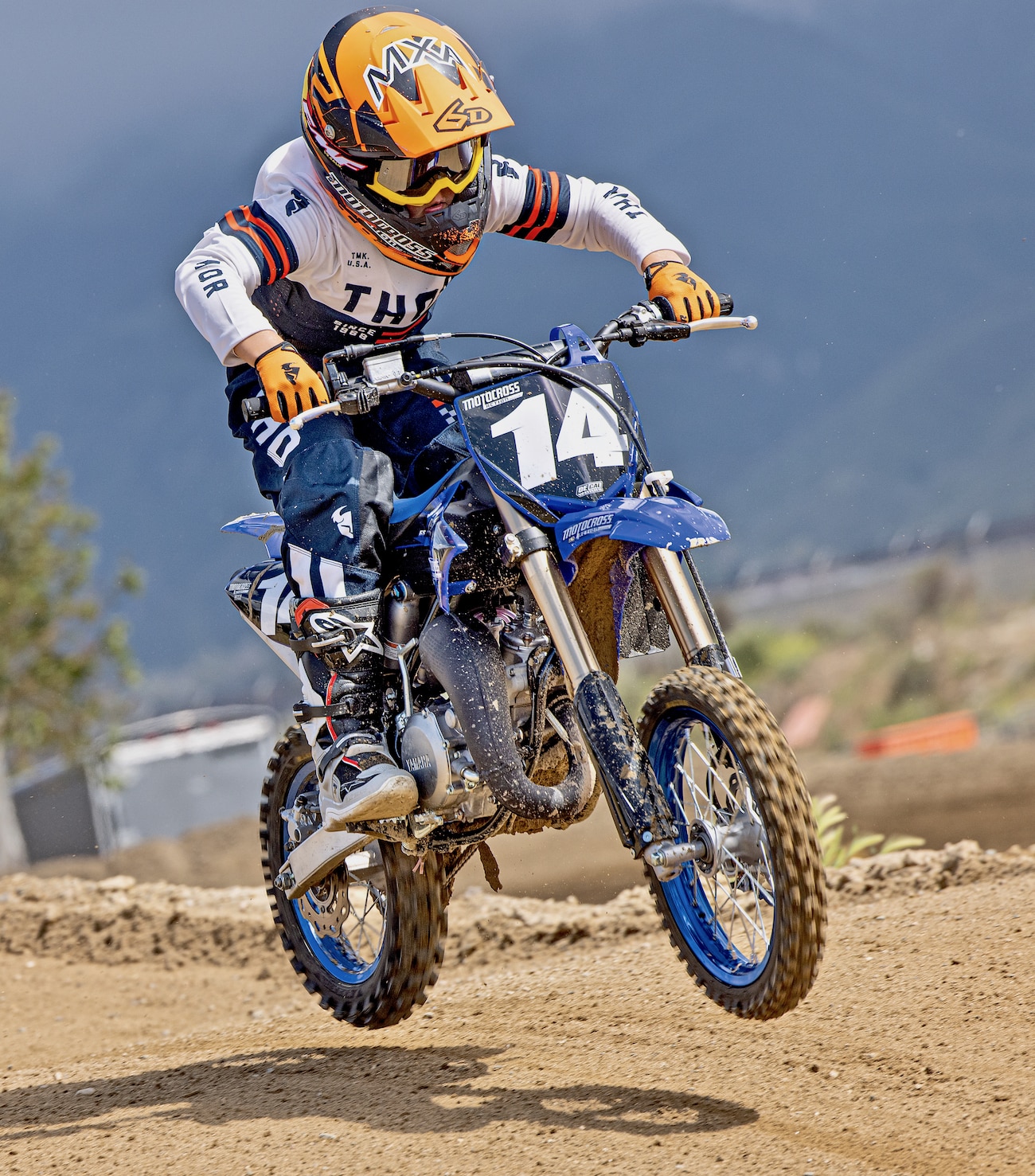
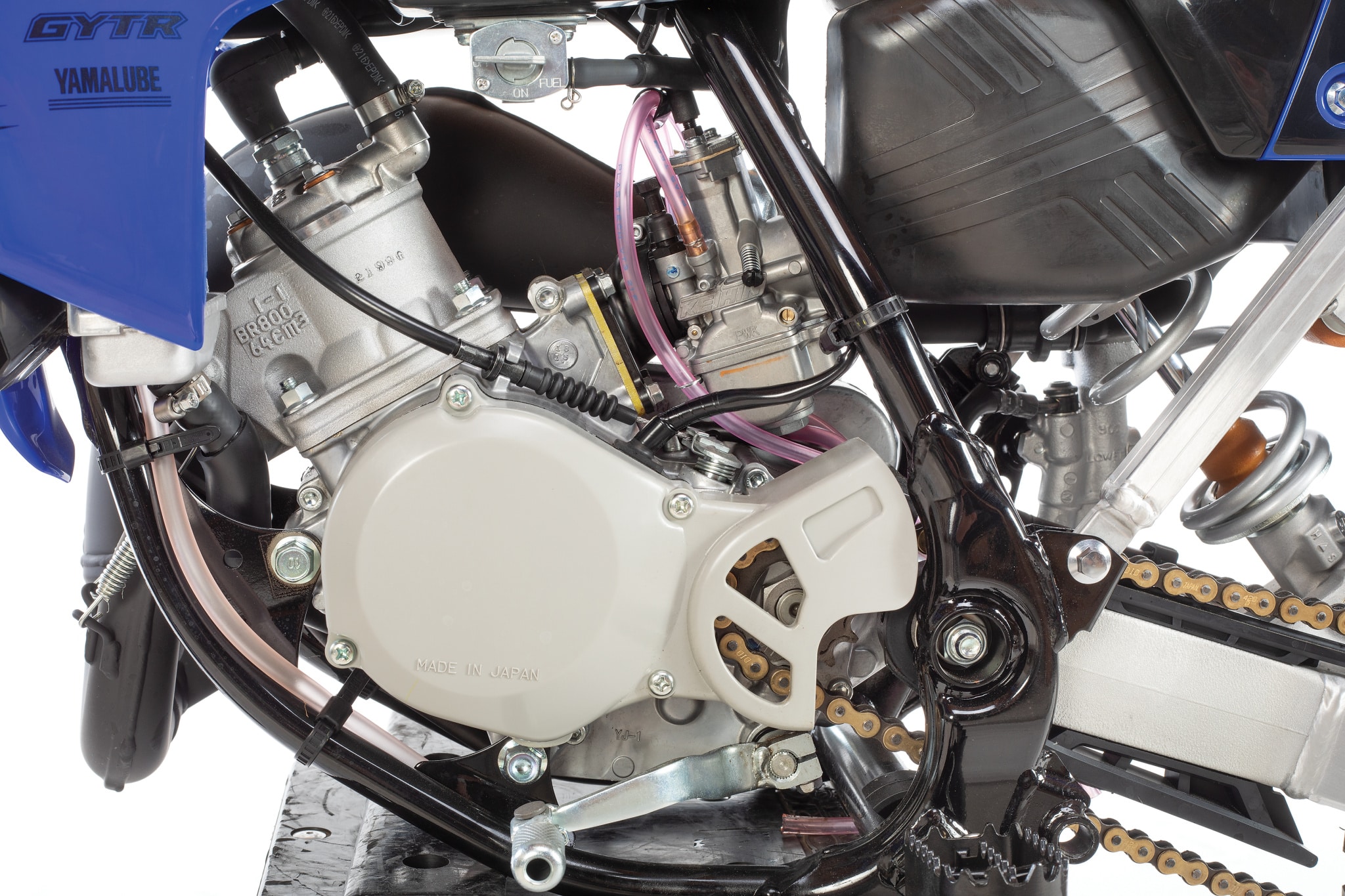
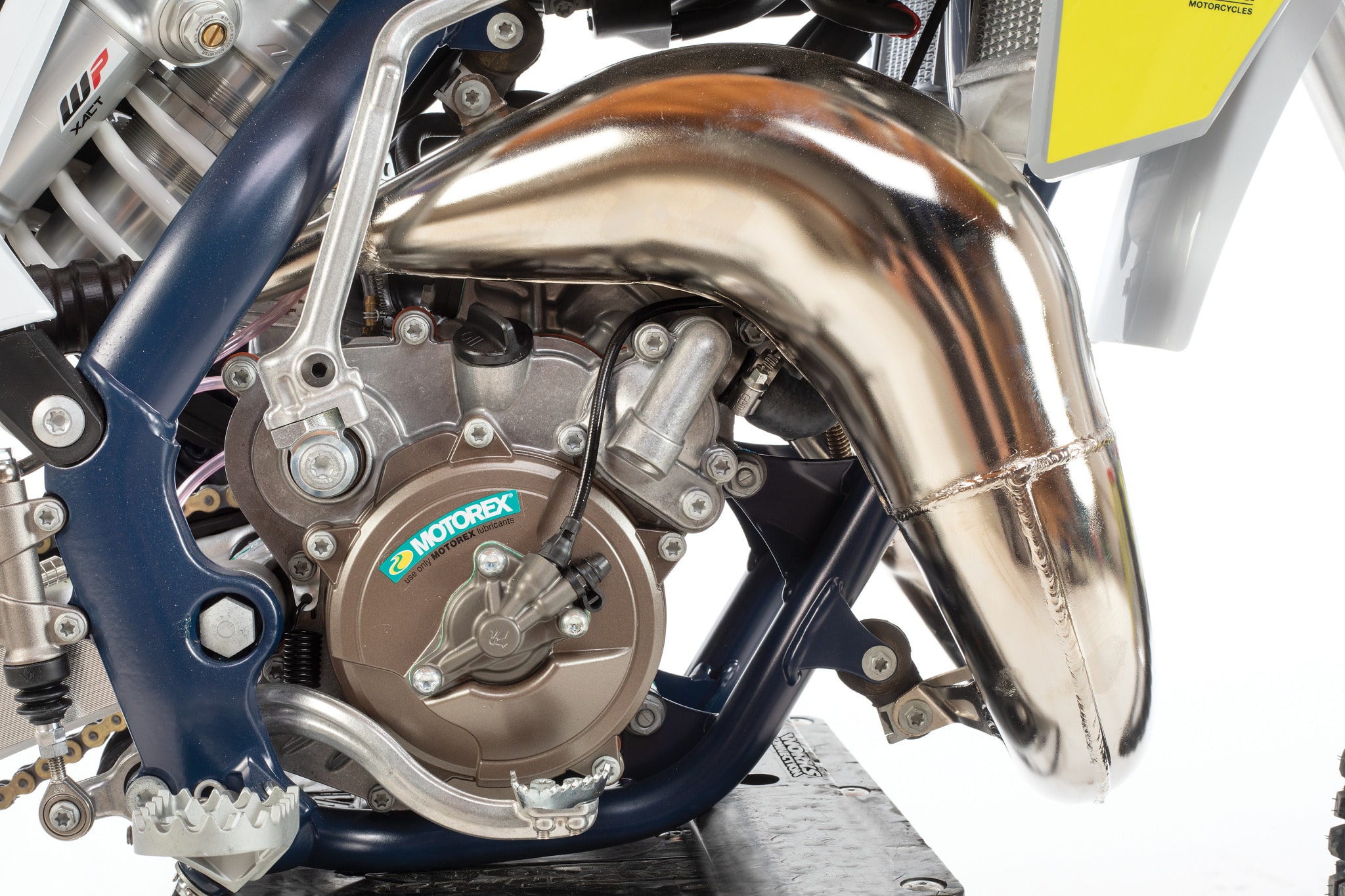
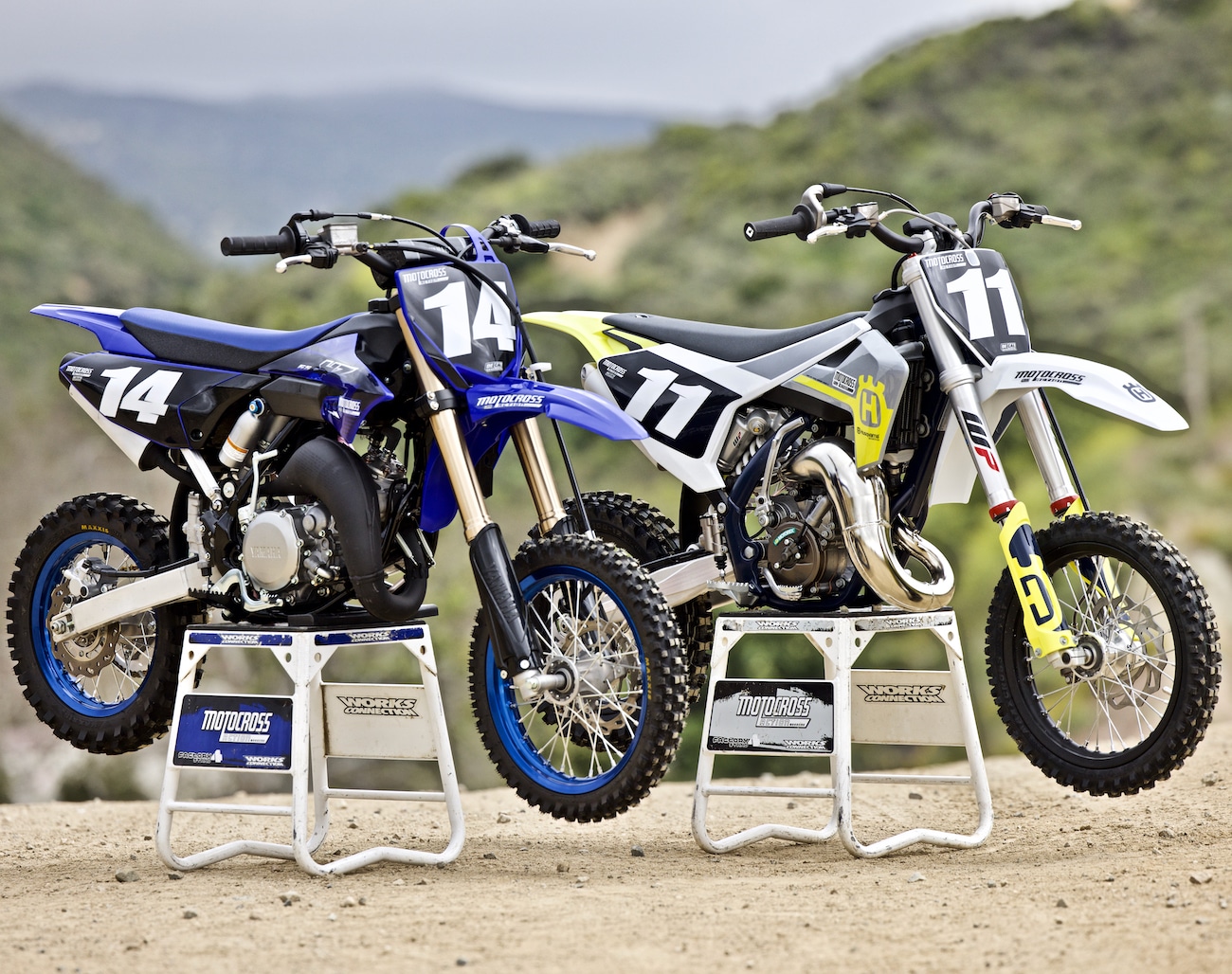




Comments are closed.